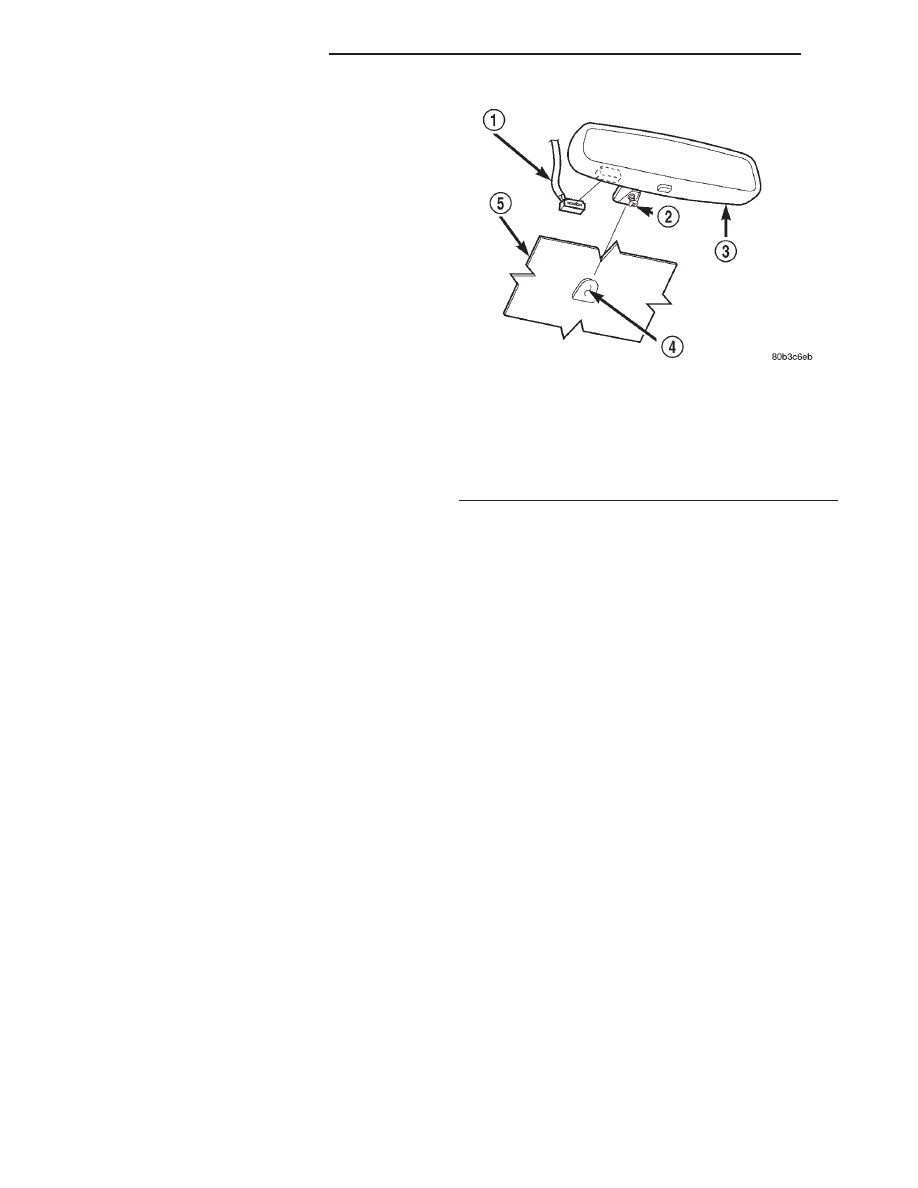Jeep Grand Cherokee WJ. Manual - part 165

REMOVAL AND INSTALLATION
AUTOMATIC DAY/NIGHT MIRROR
REMOVAL
(1) Disconnect and isolate the battery negative
cable.
(2) Disconnect the overhead wire harness connec-
tor from the automatic day/night mirror connector
receptacle (Fig. 2).
(3) Remove the screw that secures the automatic
day/night mirror to the support button on the wind-
shield.
(4) Slide the automatic day/night mirror mounting
base upwards far enough to clear the support button
on the windshield.
(5) Remove the automatic day/night mirror from
the support button on the windshield.
INSTALLATION
(1) Position the automatic day/night mirror above
the support button on the windshield.
(2) Slide the automatic day/night mirror mounting
base downwards over the support button on the
windshield.
(3) Install and tighten the screw that secures the
automatic day/night mirror to the support button on
the windshield. Tighten the screw to 1.7 N·m (15 in.
lbs.).
(4) Reconnect the overhead wire harness connector
to the automatic day/night mirror connector recepta-
cle.
(5) Reconnect the battery negative cable.
Fig. 2 Automatic Day/Night Mirror Remove/Install -
Typical
1 – CONNECTOR
2 – SCREW
3 – ELECTROCHROMATIC REAR VIEW MIRROR
4 – SUPPORT BUTTON
5 – WINDSHIELD
8T - 8
POWER MIRROR SYSTEMS
WJ